This must be a banner year in Massachusetts for woolly oak galls produced by the wasp Callirhytis lanata, because we naturalists-but-not-bug-experts who’ve never noticed them in past years, have been finding these quarter-inch, buff colored pompoms scattered all over the forest floor for the past week or so.
The first day I noticed them, I found them loose on the ground. My first thought was mast of some sort, but I know most of the plants in the woods where I walk, and none, to my knowledge, produces seeds that look quite like these little balls.
The forest was predominately oak, so on a hunch I googled “oak fuzz balls” or some such phrase, and quickly arrived at a diagnosis. I learned that the life cycle of C. lanata fits perfectly with the appearance of these galls on the forest floor at this time of year. The wasp lays its eggs in spring, and the galls form on the undersides of the leaves as the larvae develop. The galls fall off the leaves in October, and adults emerge 1-3 years later, in spring.
Today, a couple of days after a storm blew a lot of leaves off the trees, I returned to the same woods and found that some of the oak leaves now on the ground did indeed have woolly oak galls still attached to the undersides. I found them only on leaves of red oak species: northern red oak (Quercus rubra) and scrub oak (Q. ilicifolia). I did not find any on white oak leaves. Though sources are inconsistent, I don’t think C. lanata lays eggs on white oaks.
If you remove the fuzz from the gall, you find a hard, seed-like kernel, as in my photo above. I was planning to slice one open to photograph the developing larva under a microscope this afternoon, but the nice lady I paid to clean my house today mistook my woolly gall collection for a pile of dust and vacuumed them up. Fortunately, someone else has already posted a photo of a sliced kernel here.
Once you start scrutinizing oak leaves, you’ll notice a variety of galls. Below are photos of some other oak leaf galls I found today. The first photo shows a red oak leaf with a few woolly oak galls, along with at least one other kind of gall. The small, dark one at the upper left of the photo is, I believe, the gall of a midge, Polystepha pilulae. Immediately below that is another gall of similar size, with surface convolutions that make it look like a little brain. Is that another P. pilulae? Something else? If you know what it is, please leave a note in the comment section under this post.
In the final photo, a disfigured red oak leaf wears a messy cluster that looks like a bunch of woolly oak galls weathered by rain and hiking boots. Or is it another type of gall altogether?
Interested in a quick overview of the formation of oak galls in general? If so, visit this page.











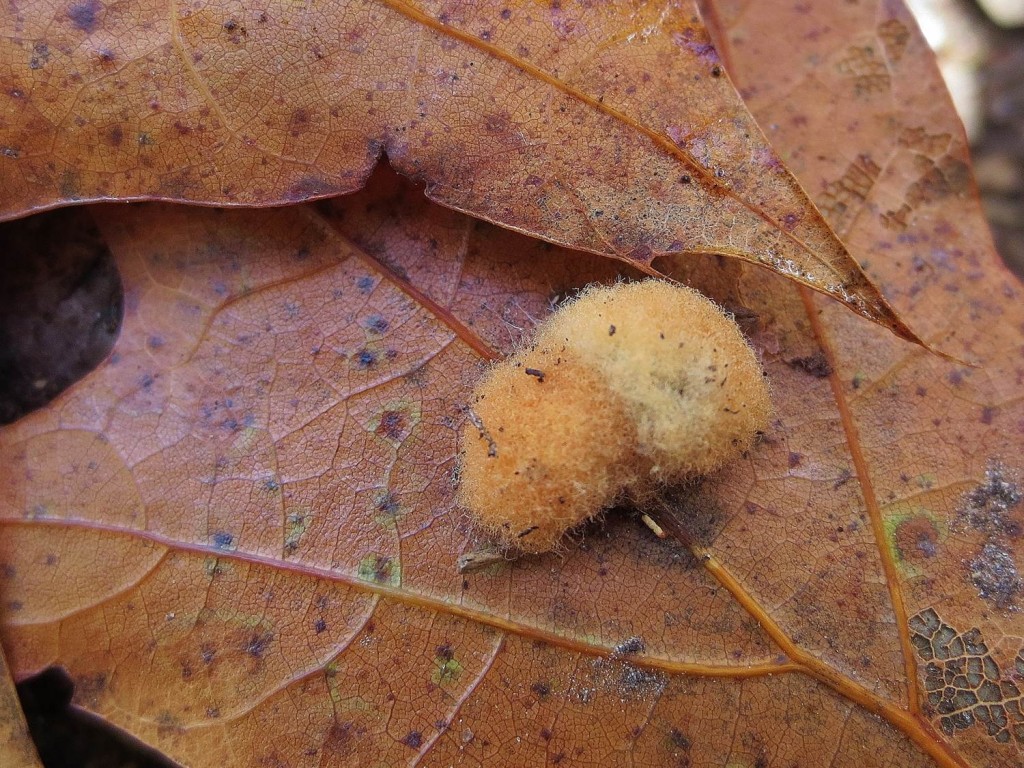
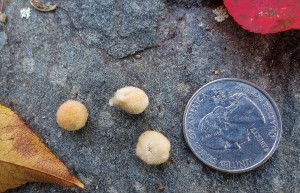

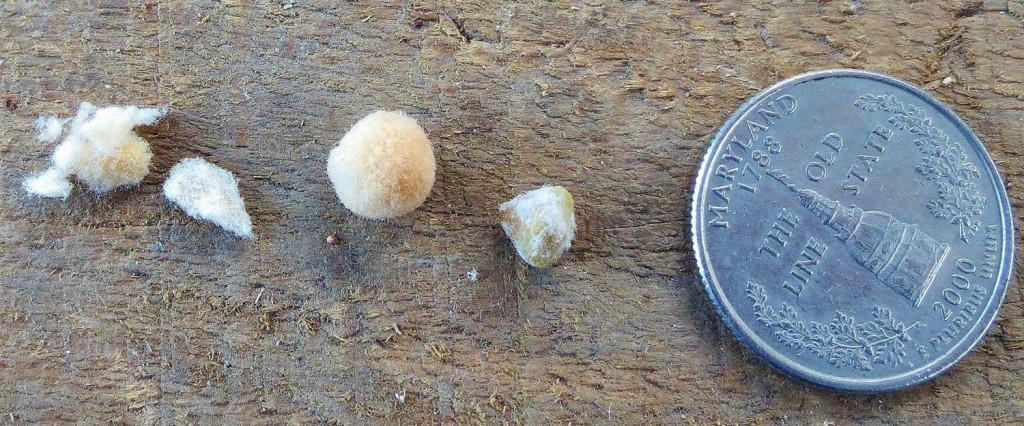
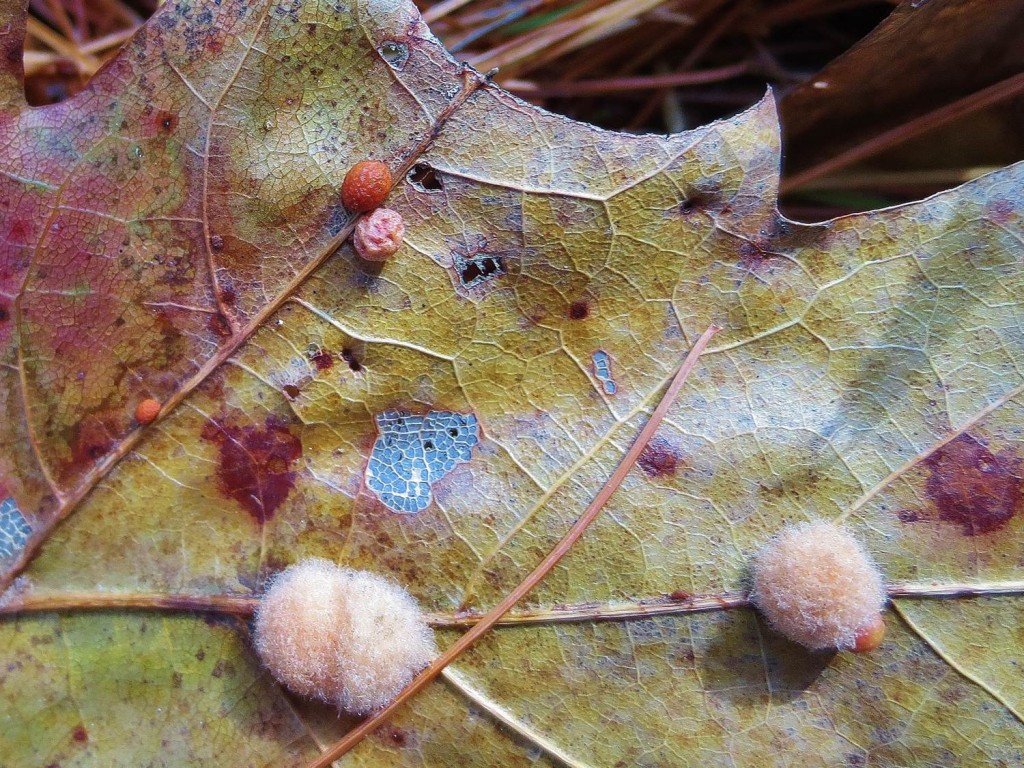
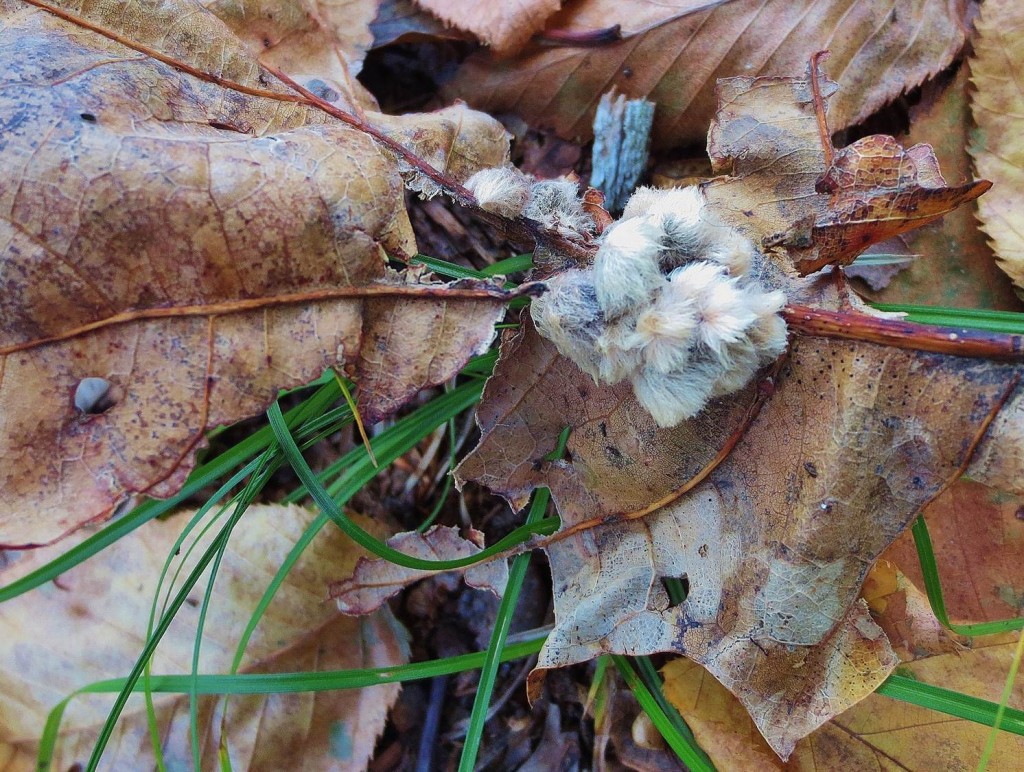
Doing some nature writing today and ran across your blog while researching galls. Very interesting, and your one acre sounds wonderful! I have a similar appreciation for simple, local nature but admire your cooking/foraging/gardening finesse, which so far I don’t have much of!
Well, I am amazed my blog came up when you were researching galls! Good to know it’s on the map. Thanks for the kind words. Just took a peek at your blog – looks like you have some great stuff there, and I’ll dig more deeply when I have some time. Thanks for stopping by!
Hi. We’ve been ‘in the woodland’ for the past eighty years, and have never come upon red-oak wooly galls ever…in the past…but here in LeSueur, MN, while gathering mast from ‘neath the red oaks about October 1st, we found what appeared to be popcorn. Upon consulting the U of M Extension office, they told us we were finding cynipid galls. YOUR information and photos are EXCELLENT, and thank you for the information. THANK YOU!!!
Glad my photos and info were useful to you. Thanks for stopping by, Art, and I hope you continue to enjoy discovering Nature in your woodland.
I live in Whitesboro NY and found these on the underside of my Oak trees leaves that fell after a wind storm. I have never seen them before in 25 years of owning my house.
I live in southwest Virginia and while hiking the AT near Mount Rogers today I found these galls all over the ground in many spots along the trail. Have never seen them in the 15 years I have lived in this area and I hike almost daily. I think the high winds we had recently as a result of tropical storm Florence brought them down in great numbers and since they were no longer attached to leaves they are very noticeable on the forest floor. Your blog was helpful in my search to identify my find.
I found these fuzzy balls all over my driveway and lawn. I brought them to the Forestry Dept. in my town and although he couldn’t identify them immediately, he found the answer for me. In the spring I found Apple Oak Tree Wasp galls in my yard and now I find these Wooly Oak galls. Can someone tell me if there is a correlation between the two of them?
I have an enormous amount of Woolly oak leaf galls, how can I get these, they’re in all my oaks.
Cissy Rogers
407-367-8900
Apopka, Fl
Winter Park, FL
I noticed these wooly oak galls today. I’ve seen them before but they are everywhere right now. I think I have at least 250 on the ground and 600+ in the tree (if not way more…2-3 attached underneath almost every leaf)
Are these bad for the oak tree or neg/pos for the ecosystem? Seems kind of crazy how these insects work. Was going to shopvac a bunch up because they are taking over a small portion of the yard but wanted to look in to them a bit first!
Saw these on my deck this morning, below an oak tree. Upon closer examination, I see they appear to be cotton balls. They appear to have been opened by either birds or squirrels that were looking for food. This is the first time I have seen these here in 35 years. Several others are on the ground, blown down by wind. The larger one was in the fork of a small new limb. Others pieces were left after being opened up by one of the birds or squirrels.
Is there a way to send a picture to see if you may know what I found today on my oak tree leaves?
Thank you for the wonderful info! I too have seem these for the first time. My granddaughter and I are creating acorn people from acorn parts, twigs, seeds and the wooly galls. Glad to know they won’t hatch till our little people are likely long gone.